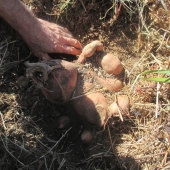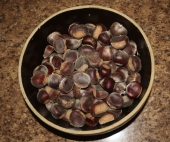Dave Lotte wrote:
Matthew Nistico wrote:What brand/model toilet are you installing?
Cheap home depot one. 😁
Excellent choice! I bought a Toto toilet at 3x the price, which even my plumber commented on when installing it, noting that I'd picked a pro-quality brand. I chose it because it is fully glazed throughout the interior plumbing, whereas in cheap toilets the glazing extends no further than at the bottom of the bowl; beyond where you can see it, the porcelain is left unglazed. Thus, mine is less likely to clog. Okay, sounds like a good thing to have and worth paying extra for. Mine is also dual flush and low flow (i.e. water saving).
It has turned out to be terrible : (
I'm sure having a fully glazed toilet is a good thing, but it has so not been worth the other drawbacks. First of all, I don't know if this is a feature common to all dual flush toilets, or all low flow toilets, or perhaps mine was somehow just installed wrong - though I don't see how that could be the case - but there is practically no pool of water inside the bowl. That is important, because the pool of water serves an important purpose! Without it, literally every other time I use the toilet I must spend 15 seconds with the toilet brush or else have a very dirty bowl, as anyone might well imagine. I cannot conceive that Toto thought this was a worthwhile trade off in order to save water. At least, not in my market area - I live an hour's drive away from a temperate rainforest; water here is in no short supply. I suppose that in desert climates they may have stricter regulations requiring such toilet features, but here I would NOT deem the inconvenience a good trade off. (I plan to soon transition to a compost bucket toilet, so it will no longer be an issue!)
But the worst was when, after many years, the toilet started to run continuously. The fill valve had failed and needed replacing. Nothing unusual, and certainly no big deal, or so I thought. But it was then that I realized how poorly designed this toilet actually is. The bulky dual flush selector mechanism is dead center of the toilet tank, meaning that the fill valve is crammed to one side leaving little room for your fingers to get to it. What is on the other side of the tank? Nothing. Meaning that Toto could easily have offset the dual flush selector mechanism to one side, leaving plenty of room to service the fill valve. But they didn't.
Further, and far worse, this toilet is designed around a "streamlined aesthetic," so that the pedestal merges seamlessly with the tank. Those pretty, clean lines result from eliminating the tank overhang on either side of the pedestal, like in a normal toilet, as can be seen in the photo of your cheap-but-actually-functional toilet from Home Depot. That overhang is where you would normally reach under to access the nut and washer securing the water line up into the fill valve. In my model toilet, since there is no overhang, you have to access it from the back of the tank.
First, the obvious: most people have never even seen the back of their toilet. Why not? Because toilets are ALWAYS installed backing up to a wall! I could ONLY even attempt to access it because the wall behind this toilet happens to be skeletal, being in an unfinished house. Otherwise, you would need to drain and detach the entire tank just to gain access. But it was still a miserable job even with fortuitous access to the back of the toilet, because there is only a small hole in the back of the porcelain tank through which to access the water line connection to the fill valve. You cannot get a tool through that hole, and only a small child could easily get their fingers through.
In short, I successfully replaced the fill valve and repaired the toilet, but it took hours! In a finished home with a solid wall behind the toilet, any professional plumber on a service call would take one look and determine that the labor would cost more to replace the $20 fill valve than to replace the entire $300 toilet ($300 when I purchased 15 years ago; probably more today).
So, Toto has managed to design and market a very expensive, disposable toilet. This could only be intentional - you cannot convince me that their engineers, who design toilets for a living, are actually this ignorant of the process to complete even the most basic toilet maintenance. How has Toto managed to maintain a good reputation as a top-of-the-line brand? I cannot guess. Except that perhaps it is because the same plumbers who determine that reputation are the ones who sell and install expensive, disposable toilets!









